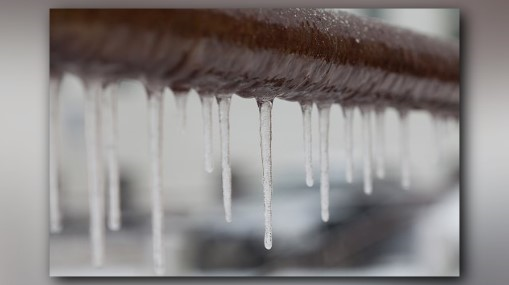Important Advice for Avoiding Frozen Plumbing in Cold Weather Seasons
Important Advice for Avoiding Frozen Plumbing in Cold Weather Seasons
Blog Article
Presented here in the next paragraphs you will discover some very good resources relating to Prevent Frozen Pipes .

Winter can wreak havoc on your pipes, especially by freezing pipes. Here's exactly how to avoid it from happening and what to do if it does.
Intro
As temperatures decline, the risk of frozen pipes increases, possibly resulting in pricey repair work and water damages. Understanding exactly how to stop frozen pipes is critical for home owners in cool environments.
Understanding Frozen Pipes
What creates pipelines to ice up?
Pipes freeze when exposed to temperatures below 32 ° F (0 ° C) for prolonged periods. As water inside the pipes freezes, it broadens, putting pressure on the pipe walls and potentially triggering them to rupture.
Risks and problems
Icy pipelines can bring about water supply disturbances, residential or commercial property damage, and pricey fixings. Ruptured pipes can flooding homes and trigger comprehensive architectural damages.
Signs of Frozen Pipes
Recognizing frozen pipelines early can avoid them from rupturing.
Exactly how to recognize frozen pipelines
Try to find decreased water circulation from faucets, unusual smells or sounds from pipelines, and visible frost on exposed pipelines.
Prevention Tips
Shielding vulnerable pipes
Wrap pipes in insulation sleeves or make use of warmth tape to protect them from freezing temperatures. Focus on pipelines in unheated or outside locations of the home.
Heating strategies
Maintain interior areas effectively warmed, especially areas with plumbing. Open cupboard doors to permit cozy air to flow around pipelines under sinks.
Protecting Outside Pipes
Yard pipes and outside faucets
Detach and drain garden pipes prior to winter months. Mount frost-proof faucets or cover exterior taps with shielded caps.
What to Do If Your Pipelines Freeze
Immediate actions to take
If you think icy pipes, keep taps open up to eliminate pressure as the ice thaws. Utilize a hairdryer or towels soaked in hot water to thaw pipelines gradually.
Long-Term Solutions
Structural changes
Think about rerouting pipelines far from exterior wall surfaces or unheated areas. Add additional insulation to attics, cellars, and crawl spaces.
Updating insulation
Buy top notch insulation for pipes, attic rooms, and walls. Correct insulation assists preserve consistent temperatures and reduces the threat of icy pipes.
Conclusion
Protecting against frozen pipes needs aggressive measures and quick reactions. By comprehending the reasons, indicators, and preventive measures, house owners can shield their pipes throughout winter.
6 Proven Ways to Prevent Frozen Pipes and Protect Your Home
Disconnect and Drain Garden Hoses
Before winter arrives, start by disconnecting your garden hoses and draining any remaining water. Close the shut-off valves that supply outdoor hose bibs and leave the outdoor faucet open to allow any residual water to drain. For extra protection, consider using faucet covers throughout the colder months. It’s also important to drain water from any sprinkler supply lines following the manufacturer’s directions.
Insulate Exposed Pipes
Insulating your pipes is an effective way to prevent freezing. Pipe insulation is readily available at home improvement stores and is relatively inexpensive. Pay close attention to pipes in unheated areas such as the attic, basement, crawl spaces, or garage. Apply foam insulation generously to create a buffer against the cold. You can also wrap your pipes in heat tape or thermostat-controlled heat cables for added warmth.
Seal Air Leaks
Inspect your home for any cracks or openings that could let in cold air. Seal any holes around the piping in interior or exterior walls, as well as the sill plates where your home rests on its foundation. Additionally, make sure to keep your garage door closed unless you’re entering or exiting. Leaving it open creates a significant air leak that can lead to frozen pipes.
Allow Warm Air Circulation
During cold snaps, it’s essential to allow warm air to circulate evenly throughout your home. Leave interior doors ajar to promote better airflow. Open kitchen and bathroom cabinets to help distribute heat consistently around the rooms. If you have small children or pets, be sure to remove any household chemicals or potentially harmful cleaners from open cabinets for safety.
Let Faucets Drip
A small trickle of water can make a big difference in preventing ice formation inside your pipes. When temperatures drop significantly, start a drip of water from all faucets served by exposed pipes. This continuous flow helps prevent the water from freezing. Additionally, running a few faucets slightly can relieve pressure inside the pipes, reducing the chances of a rupture if the water inside does freeze.
https://choateshvac.com/6-proven-ways-to-prevent-frozen-pipes-and-protect-your-home/

As an avid reader on Helpful Tips to Prevent Frozen Pipes this Winter, I thought sharing that editorial was necessary. If you enjoyed reading our blog entry if you please make sure you remember to pass it around. Thank-you for your time invested reading it.
More Details Report this page